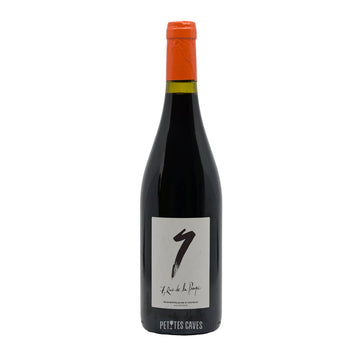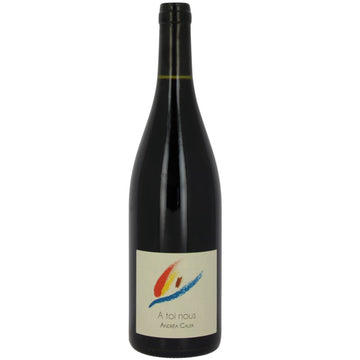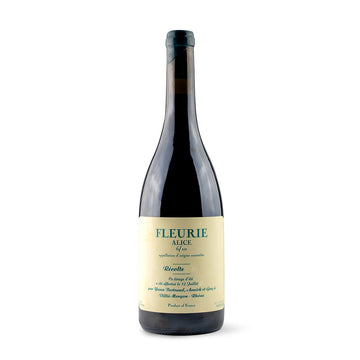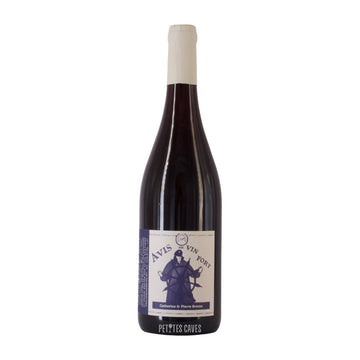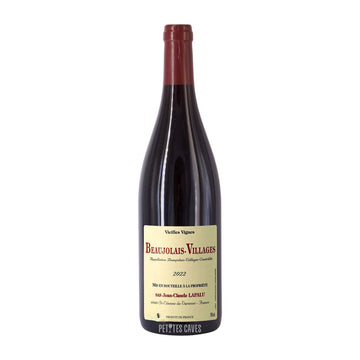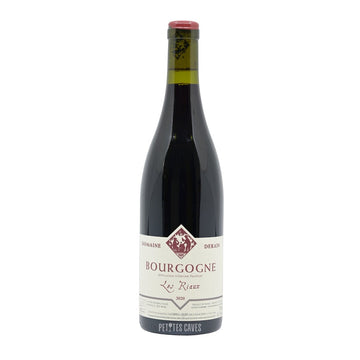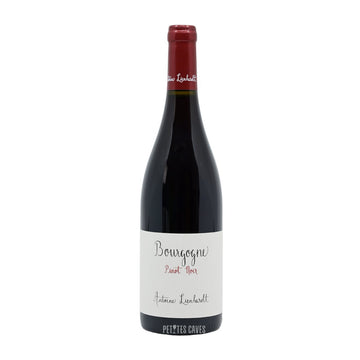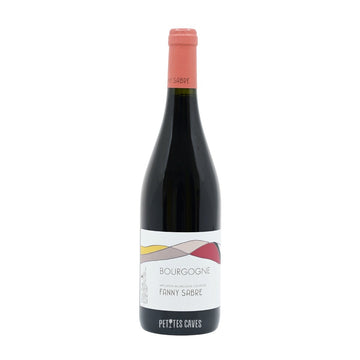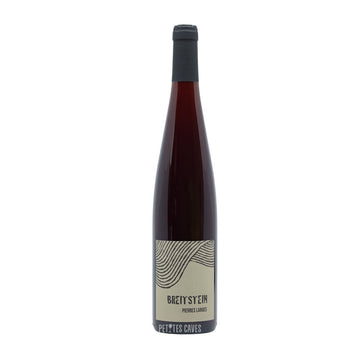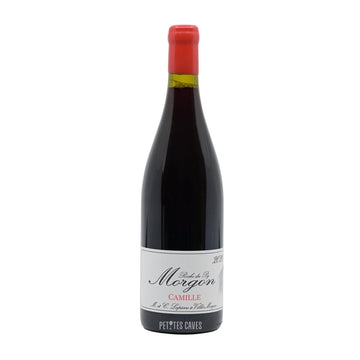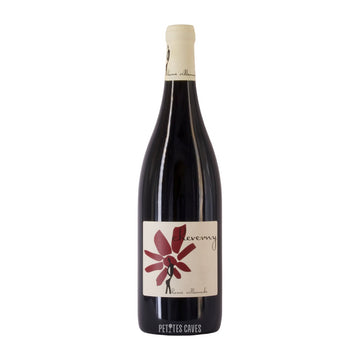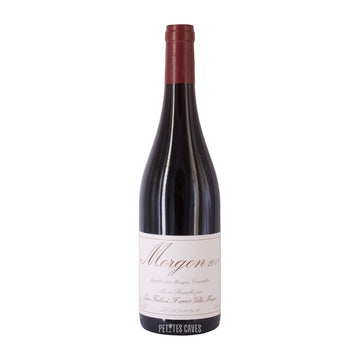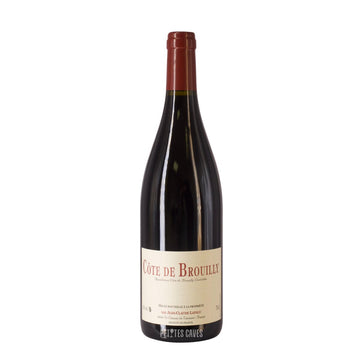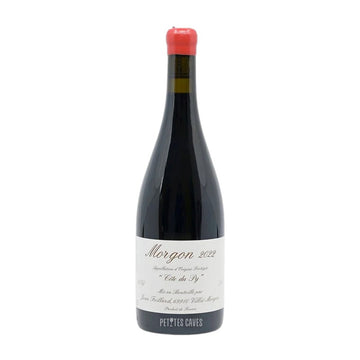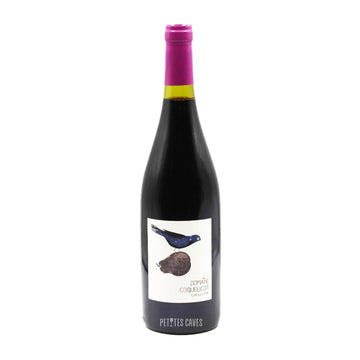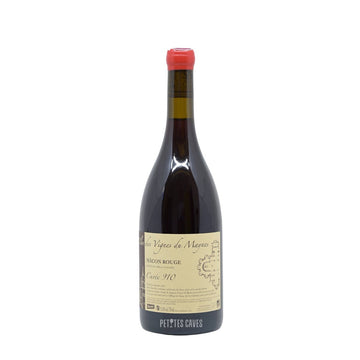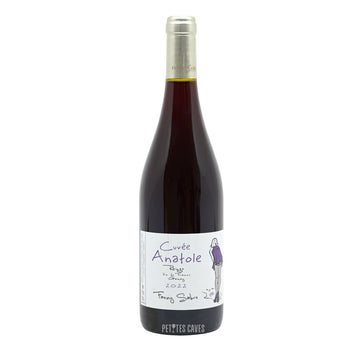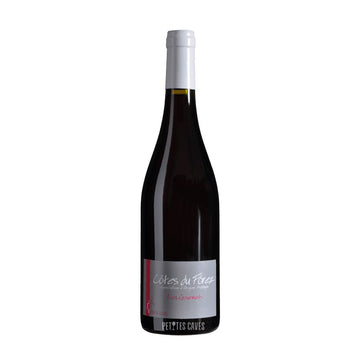
Low-tannin red wine: Our selection
Red wines with little tannin are prized for their smoothness and accessibility. Perfect for those who prefer light wines, they offer fruity aromas of cherry, raspberry or plum, without the astringency of pronounced tannins. Their supple texture makes them an ideal choice for light meals, aperitifs or moments of relaxation. These wines stand out for their freshness and balance, providing a pleasant, convivial experience. Discover our selection of low-tannin red wines, suitable for all palates, on Petite Cave, from environmentally-friendly winemakers.

don't forget to stop at the pump!
Mas Coutelou
Vin de France Red 2023
11,20 €
I love this vintage!
Domaine Marcel Richaud
Vin de France Red 2024
10,95 €
A breath of fresh air :)
Les Bertrand
Fleurie Red 2022
26,90 €
Fresh and available
Domaine Breton
Bourgueil Red 2023
14,90 €
A crisp Gamay to (re)discover at a low price
Jean Claude Lapalu
Beaujolais Villages Red 2023
17,40 €
Rails for laughers
Domaine Derain
Burgundy Red 2022
28,50 €
A wine first and foremost!
Antoine Lienhardt
Burgundy Red 2023
34,50 €
A blend of 2 grape varieties on a beautiful terroir
Léo Dirringer
Alsace Red 2022
17,90 €
Always worth a visit
Domaine Marcel Lapierre
Morgon Red 2023
34,90 €
30,00 €
A cuvée not to be missed...what a gamay!
Jean Foillard
Morgon Red 2023
18,95 €
Too much happiness in 75 cl!
The last bottles
Jean Claude Lapalu
Côte de Brouilly Red 2022
25,90 €
Too much happiness in 75 cl!
The last bottles
Jean Claude Lapalu
Côte de Brouilly Red 2023
25,90 €
the back-to-school bomb for 2024!
Domaine Coquelicot
Périgord PGI Red 2022
13,90 €
The flagship Winery
Clos des Vignes du Maynes
Mâcon Red 2023
48,00 €
Stress-free initiation
Fanny Sabre
Vin de France Red 2023
23,20 €
On fruity minerality
Verdier-Logel
Côtes du Forez Red 2023
10,90 €
Red wines with little tannin
Where do tannins come from in wine?
Tannins are natural compounds found mainly in the skins, seeds and stalks of grapes. During vinification, tannins are extracted when the grape juice comes into prolonged contact with these solid parts. This process, called maceration, is essential for red wines, as it's how the wine acquires its color, complex aromas and structure.
Tannins are responsible for the astringent or dry mouthfeel often experienced when tasting certain red wines. They act as natural preservatives, enabling some red wines to age longer while developing more complex flavors over time. Tannins can vary in quantity and intensity depending on several factors: the Grape variety, the winemaking method and even the terroir. For example, grape varieties such as Cabernet Sauvignon, Syrah or Nebbiolo are known to produce wines rich in tannins, offering structure and great ageing potential. On the other hand, some grape varieties produce wines that are naturally softer and less tannic. The way in which the wine is made also plays a role. Shorter maceration or the use of gentle techniques can reduce tannin extraction, resulting in softer, more accessible wines.
Which regions produce low-tannin wines?
Low-tannin wines are often associated with particular grape varieties and wine-growing regions where production focuses on fresh, fruity, easy-drinking wines. Here are a few regions known for their light, low-tannin red wines.
Beaujolais (France)
Beaujolais is probably the region most famous for its low-tannin red wines. Produced from the Grape variety Gamay grape, Beaujolais wines are light, fruity and low in tannin. These wines are often characterized by aromas of fresh red fruits such as cherry, raspberry and strawberry. Beaujolais Nouveau, a vin primeur released every November, is the perfect example of an easy-drinking red wine with very little tannin and great freshness.
Loire Valley (France)
In the Loire Valley, grape varieties such as Pinot Noir and Cabernet Franc produce light, low-tannin red wines. Saumur-Champigny, for example, is a red wine renowned for its suppleness and delicate aromas of red fruits and flowers. Pinot Noir from the Loire Valley also offers light wines, perfect for those looking for less structured, more accessible wines.
Burgundy (France)
Burgundy is famous for its elegant red wines made from Pinot Noir, a Grape variety grape variety with a reputation for low tannin. Burgundy wines are distinguished by their finesse and aromatic complexity, with notes of cherry, raspberry and sometimes undergrowth. Red Burgundies are often softer in tannin than other French red wines, making them pleasant to drink young.
Germany
In Germany, Grape variety Spätburgunder (the local name for Pinot Noir) produces light red wines with little tannin and subtle red fruit aromas. Regions such as Rhineland and Baden produce delicate red wines, often fresher than their French counterparts, with lively acidity and discreet tannin structure.
Italy
Some regions of Italy, such as Piedmont, produce low-tannin wines made from Grape variety Barbera. Barbera wines are often described as fresh, fruity and lightly tannic. Thanks to their supple texture and high acidity, they are perfect for accompanying pasta dishes or cold meats.
What dishes should low-tannin red wines be paired with?
One of the advantages of low-tannin red wines is their versatility at the table. Their light texture and fruity aromas pair well with a variety of dishes. Unlike more powerful red wines, which often require richly flavored dishes to balance out their intensity, low-tannin wines can be paired with more delicate dishes.
For a more daring pairing, try a low-tannin red wine with spicy dishes. For example, lightly spiced Asian-inspired dishes or recipes based on peppers and Mediterranean herbs can find a nice balance with the sweetness and fruitiness of these wines. Unlike more tannic wines, which can reinforce spices, low-tannin wines soothe the taste buds and add a refreshing touch.
Finally, for cheese lovers, low-tannin wines are also an excellent choice. They go particularly well with soft cheeses such as Brie or Camembert, bringing out their creaminess without the wine taking over. Their fruity balance and suppleness offer a pleasant harmony with these delicate dairy products.


